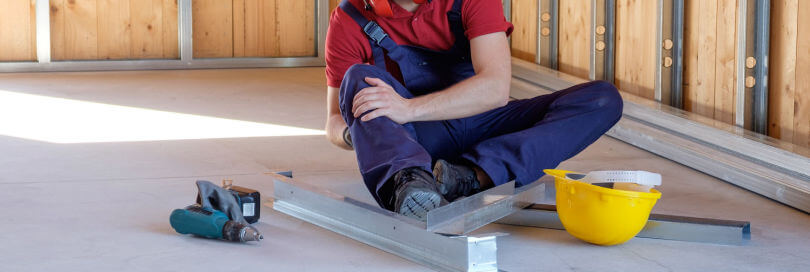
In 2016, a 20-year-old auto parts factory worker in Cusseta, Alabama died two weeks before her wedding when she was crushed and impaled by a robotic machine. (Source: WTVM.com)
A Jack, Alabama poultry plant was cited by the Occupational Health and Safety Administration (OSHA) in 2014 for conditions that exposed workers to dangerous machinery and other hazards that could cause falls and repetitive motion injuries like carpal tunnel syndrome. (Source: splcenter.org)
A set dresser working during the making of the movie Selma in Montgomery, Alabama in 2014 was injured falling through a roof. (Source: deadline.com)
These are three publicized cases of workplace injuries in Alabama. There are thousands more every year.
Alabama Workplace Injury Statistics
Alabama is known for manufacturing and agriculture, both of which can be particularly dangerous to workers. (Source: bizjournals.com)
The ten most dangerous jobs in America, according to data from the US Department of Labor, Bureau of Labor Statistics (BLS), are those done by the following:
- logging workers
- fishers and fishing workers
- aircraft pilots and flight engineers
- roofers
- refuse and recyclable material collectors
- mining machine operators
- driver/sales workers and truck drivers
- farmers, ranchers, and other agricultural managers
- electrical power-line installers and repairers
- construction laborers. (Source: Forbes.com)
According to the BLS, in Alabama in 2015, there were 70 work-related injuries that resulted in death. Transportation incidents (such as car or truck accidents) caused 53% of them.
Falls, slips, and trips caused 14%, contact with objects and equipment caused 13%, violence and other incidents caused by people or animals caused 7%, and all other causes accounted for the remaining 13%. Ninety percent of these fatal work injuries were to men.
There were 44,400 nonfatal work-related injuries and illnesses in Alabama in 2015. Twenty-eight percent were serious enough to result in the injured worker having to take time off work, and 23% resulted in the employee being transferred to a different job or working under restrictions.
Common Workplace Body Injuries
Many of these work-related injuries were musculoskeletal—that is, they were injuries to the muscles or bones. The largest category of such injuries, by far, was back injuries (lower back, 64%; upper back, 5%; unspecified part of the back, 31%).
The second-most-common location of musculoskeletal injuries was the upper extremities (shoulders, 60%; wrists, hands, fingers, elbows, and upper arms, much smaller percentages each). Lower extremity injuries were also common.
According to the BLS, nationally, nearly 20% of all injuries and illnesses in the workplace are back injuries sustained by more than a million workers. The most common work-related back injuries are strains (injuries to muscles), sprains (injuries to ligaments), and herniated disks (injuries to the cushioning disk between the vertebrae of the spine). (Source: blr.com)
OSHA explains that back injuries often develop gradually, even when they seem to be caused by a particular event:
Back disorders can develop gradually as a result of microtrauma brought about by repetitive activity over time or can be the product of a single traumatic event. Because of the slow and progressive onset of this internal injury, the condition is often ignored until the symptoms become acute, often resulting in disabling injury.
Acute back injuries can be the immediate result of improper lifting techniques and/or lifting loads that are too heavy for the back to support.
While the acute injury may seem to be caused by a single well-defined incident, the real cause is often a combined interaction of the observed stressor coupled with years of the weakening of the musculoskeletal support mechanism by repetitive micro-trauma. Injuries can arise in muscle, ligament, vertebrae, and disks, either singly or in combination.
BLS data shows that nationally, in 2015, for every 10,000 full-time workers, there were 104 nonfatal work injuries and illnesses that required the injured worker to take time off work—a total of 1,153,490 cases. The occupations in which the greatest numbers of these injuries occurred were tractor-trailer truck drivers; laborers and freight, stock, and material movers; and nursing assistants.
Nearly a third of such injuries were musculoskeletal, such as sprains or strains from overexertion in lifting. The most common events resulting in injury were overexertion and bodily reaction (33%) and falls, slips, and trips (27%).
Common Causes of Workplace Injuries
The top ten causes of workplace injuries, according to workers’ compensation insurance companies nationwide, are:
- Overexertion. Examples: injuries from lifting, pushing, pulling, holding, carrying, or throwing.
- Slips and trips. Examples: slipping on wet floors or tripping over a foreign object or uneven surface.
- Falls from heights. Examples: falls from roofs, ladders, and stairways.
- Reacting without falling. Examples: injuries from jerking or twisting while slipping or tripping, but not falling.
- Being hit by a falling object. Examples: being hit by an object that falls from shelves or is dropped by another person.
- Walking into an object. Examples: running into walls, doors, cabinets, glass windows, and furniture.
- Vehicle crashes.
- Machine entanglement. Examples: loose clothing, shoes, jewelry, fingers, or unbound hair being caught in machinery, typically in a factory.
- Repetitive motion injuries. Examples: carpal tunnel syndrome from excessive use of a computer.
- Violent acts. Examples: attacks caused by office politics and other personal arguments.
(Source: Liberty Mutual Research Institute for Safety’s 2014 Workplace Safety Index)
Most Common Accidents at Work
Construction workers have dangerous jobs. The most common accidents, according to data from OSHA, are:
- Falls. Employees commonly fall from building structures, scaffolding, stairs, and ladders.
- Electrocution. In 2005, nationwide, 9% of construction worker deaths were caused by electrocution. This can be caused by coming into contact with power lines (either overhead or buried), using extension cords improperly, or touching other energy sources like damaged wires or tools.
- “Caught-in” accidents. This refers to incidents when workers are caught between two objects (such as a forklift and a wall) or inside an object. Using heavy equipment like bulldozers, cranes, and front-end loaders are what most often leads to this type of accident.
- “Struck-by” accidents. Approximately 10% of all work-related deaths are from “struck-by” accidents. Workers can be hit by a variety of objects that are falling, flying, or swinging. About 75% of deaths resulting from these accidents involve heavy equipment like trucks or cranes. Swinging backhoes sometimes strike workers. Vehicles that overturn can crush people. Using power tools or pushing, pulling, or prying can cause objects to fly into the air and hit workers. Air pressurized above 30 pounds per square inch can drive oils and other particles through your skin. Building concrete or masonry walls are particularly dangerous because of the loads that have to be supported.
Our Workplace Injury Attorneys Can Help
While there are many types of workplace injuries, there is usually only one way to deal with them. You need to get a lawyer. Although you might not realize it, your injury may entitle you to compensation.
With the help of a personal injury lawyer, you can determine if you are eligible for that compensation. They can examine your situation and come up with a strategy to get you what you deserve. All it takes is contacting a lawyer with experience in personal injury.
Here at Morris, King & Hodge, P.C., we have extensive experience representing people in personal injury cases. In our years of dedication, we have dealt with many workplace injuries. You need someone who understands what it takes to stand up for you. And that is exactly what we can do.
Our team has the experience and resources needed to win cases. In the past, we have helped many clients get successful outcomes.
Workplace injury cases can be particularly challenging, but we know how to be effective. We will dedicate our time and resources to getting you the best possible outcome we can achieve.
You do not need to live without compensation for your workplace injury. There is hope. Contact us and find out what we can do for you.









